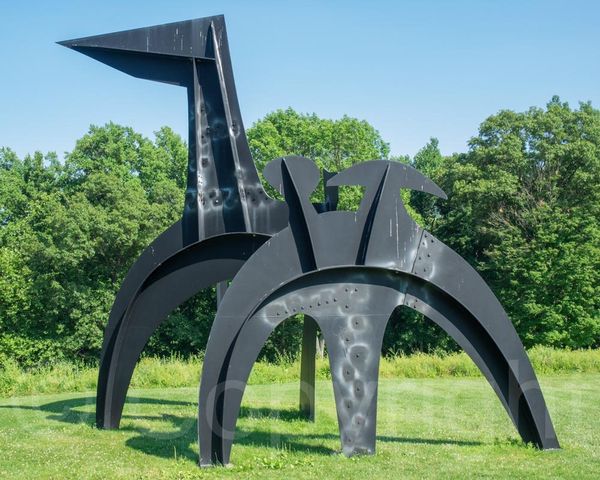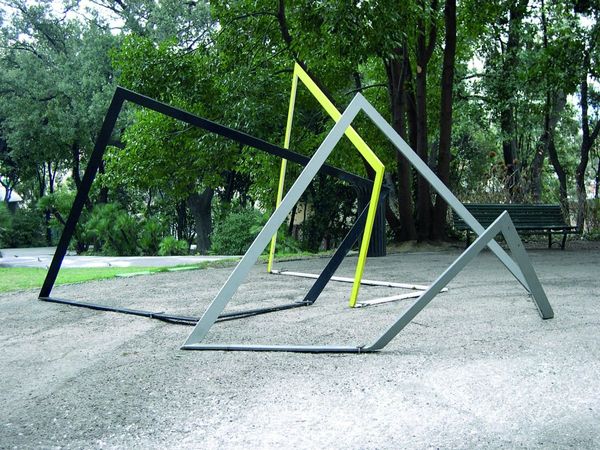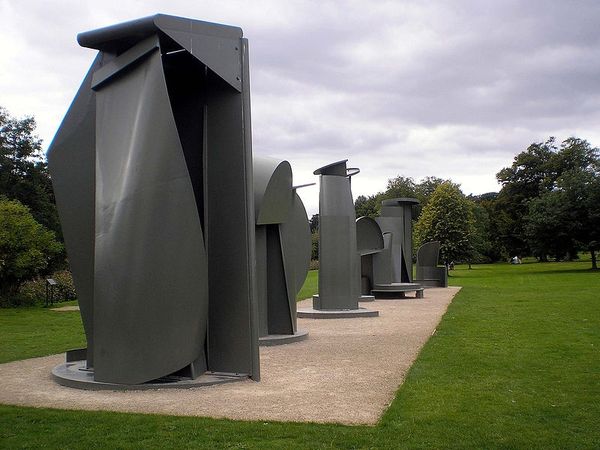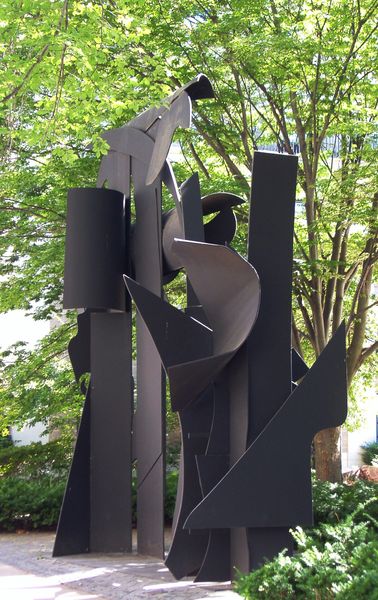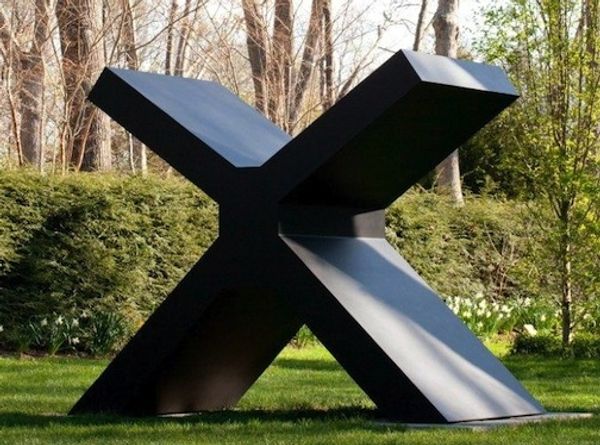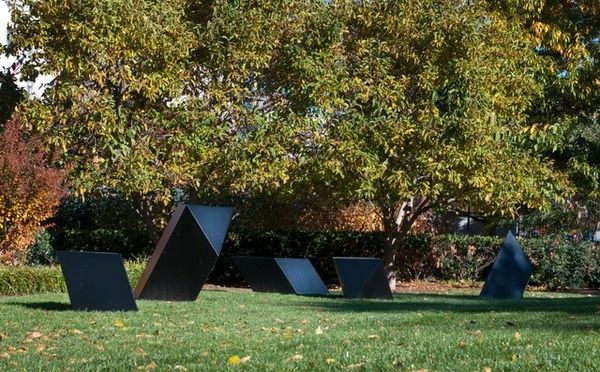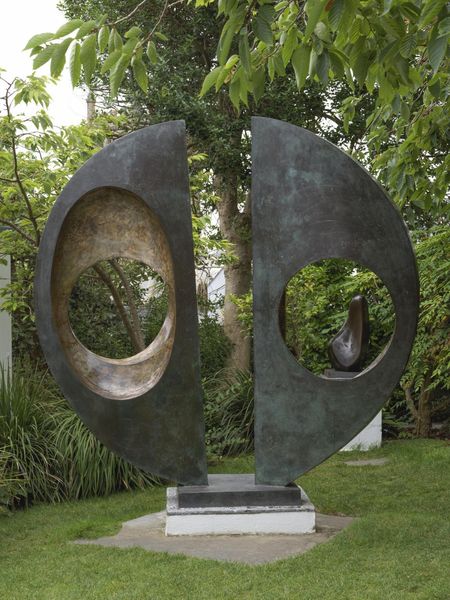
metal, sculpture, site-specific
#
minimalism
#
metal
#
form
#
environmental-art
#
geometric
#
sculpture
#
site-specific
#
abstraction
#
line
#
modernism
Copyright: Phillip King,Fair Use
Art Historian:Okay, let’s dive in. Editor: Right! So, this sculpture is called "Quill", created by Phillip King in 1971. It looks like it's made of painted metal. My first thought is how playful it is! The bright colors and curving lines seem to almost dance across the landscape. It seems to embrace its public setting too. What do you make of it? Art Historian: I agree with you; its situation in a public green space matters greatly. King's "Quill," especially considering it was made in '71, engages with the shift in sculpture's role. Traditionally, sculptures were commemorative and monumental; "Quill," instead, invites interaction and emphasizes the aesthetic experience for a diverse public. Consider Minimalism’s concern with surface, but placed outdoors. The geometry offers simplicity, yet the placement avoids the self-contained quality often expected from such forms, like, say, in a gallery setting. Editor: That makes sense! So, you are saying that Minimalism wanted to escape institutions by embracing environment? Art Historian: Precisely. These artists expanded the gallery space, embracing outdoor and unconventional settings. Phillip King and others pushed this further by using vivid colors and approachable forms, questioning the idea of the "high art" object set apart from everyday life. How do you think the colors play a role here? Editor: I think that the orange and yellow, alongside the big metal shapes, are friendly and almost inviting! The title suggests “Quill,” perhaps like a child's drawing in three dimensions? Art Historian: Exactly! These types of strategies aimed to democratize art. But is this always effective? Editor: Well, I guess making art accessible can challenge existing hierarchies, but there is also the risk of not challenging the status quo at all! Art Historian: An astute observation. And this tension is a key component in understanding works made for public spaces! Editor: Thanks! I never thought about this that way before. I'm starting to see how public art says so much about who we are!
Comments
No comments
Be the first to comment and join the conversation on the ultimate creative platform.
